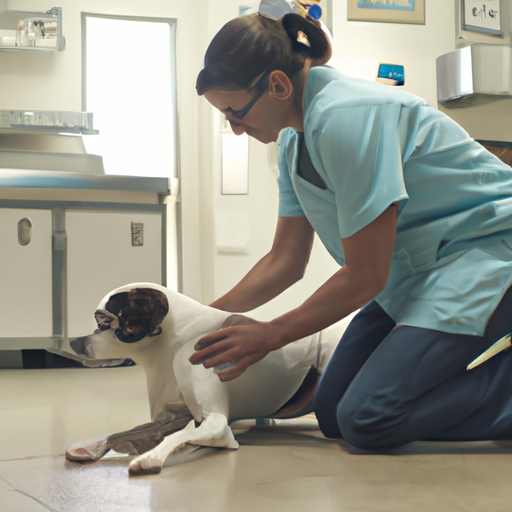As a dog parent, noticing that your pet is suffering from weak back legs can be a worrying experience. This guide will provide you with the information you need to understand the possible reasons, symptoms, and treatment options available for this issue.
1. Understanding the Issue
Weakness in a dog’s back legs can occur due to several reasons ranging from age-related degeneration to specific medical conditions. It’s important to understand that this can be a serious issue affecting your dog’s quality of life, so it’s crucial to seek veterinary attention as soon as possible.
Age-Related Degeneration
Just like humans, dogs can also suffer from age-related physical degeneration. This is a natural process, and it can lead to weaker muscles and joints, especially in the hind legs.
Medical Conditions
Several medical conditions can also cause weakness in your dog’s back legs. Here’s a list of some common ones:
- Hip dysplasia: A genetic condition causing an abnormally formed hip joint.
- Arthritis: Inflammation of the joints, often due to age or injury.
- Degenerative Myelopathy: A progressive disease of the spinal cord in older dogs.
2. Recognizing the Symptoms
Identifying weak back legs in your dog can be tricky, especially in the early stages. Here are some signs to look out for:
- Difficulty getting up from a lying or sitting position
- Slipping or dragging of back feet
- Difficulty or reluctance in climbing stairs
- Swelling or pain in the joints
- Changes in gait or walking pattern
3. Seeking Veterinary Help
If you observe any of the above symptoms, it’s important to take your dog to a veterinarian. They will perform a thorough physical examination, possibly followed by diagnostic tests such as X-rays or a CT scan.
4. Treatment Options
The treatment for weakness in your dog’s back legs will depend on the underlying cause. Here are some possible treatment options:
- Physical Therapy: This can help to strengthen your dog’s muscles and improve their mobility.
- Medication: Your vet may prescribe medication to manage pain or treat the underlying medical condition.
- Surgery: In some cases, surgical intervention may be required.
- Assistive Devices: Devices like dog wheelchairs or harnesses can help improve your dog’s movement.
Remember, it’s important to follow your vet’s advice and treatment plan to ensure the best possible outcome for your pet.
5. Caring for Your Dog at Home
While veterinary treatment is crucial, there are also things you can do at home to help your dog. Here are some suggestions:
- Maintain a healthy weight for your dog to reduce strain on their legs.
- Provide a comfortable, padded bed to support their joints.
- Encourage regular, gentle exercise to keep their muscles strong.
- Consider adding a dog-friendly ramp or stairs to help them move around more easily.
FAQ Section
Here are some frequently asked questions about weak back legs in dogs:
Q: Can a dog recover from weak back legs?
A: Depending on the cause, some dogs can recover fully with appropriate treatment, while others may require lifelong management.
Q: Can exercise help my dog’s weak back legs?
A: Yes, gentle and regular exercise can help strengthen your dog’s muscles. However, it’s important to consult with your vet about the type and amount of exercise that is suitable for your dog.
Q: What can I do to prevent my dog’s back legs from becoming weak?
A: Regular exercise, a healthy diet, and regular vet checks can help maintain your dog’s overall health and potentially prevent some causes of weak back legs.
Q: How can I make my home more comfortable for my dog with weak back legs?
A: You can provide a padded bed, use dog-friendly ramps or stairs, and keep the floor clear of obstacles to make it easier for your dog to move around.
Q: Should I consult a vet even if my dog is just slightly limping?
A: Yes, it’s always a good idea to consult a vet if you notice any changes in your dog’s behavior or movement. Early detection and treatment of potential issues can often lead to better outcomes.



